National Sports Governance Bill 2025
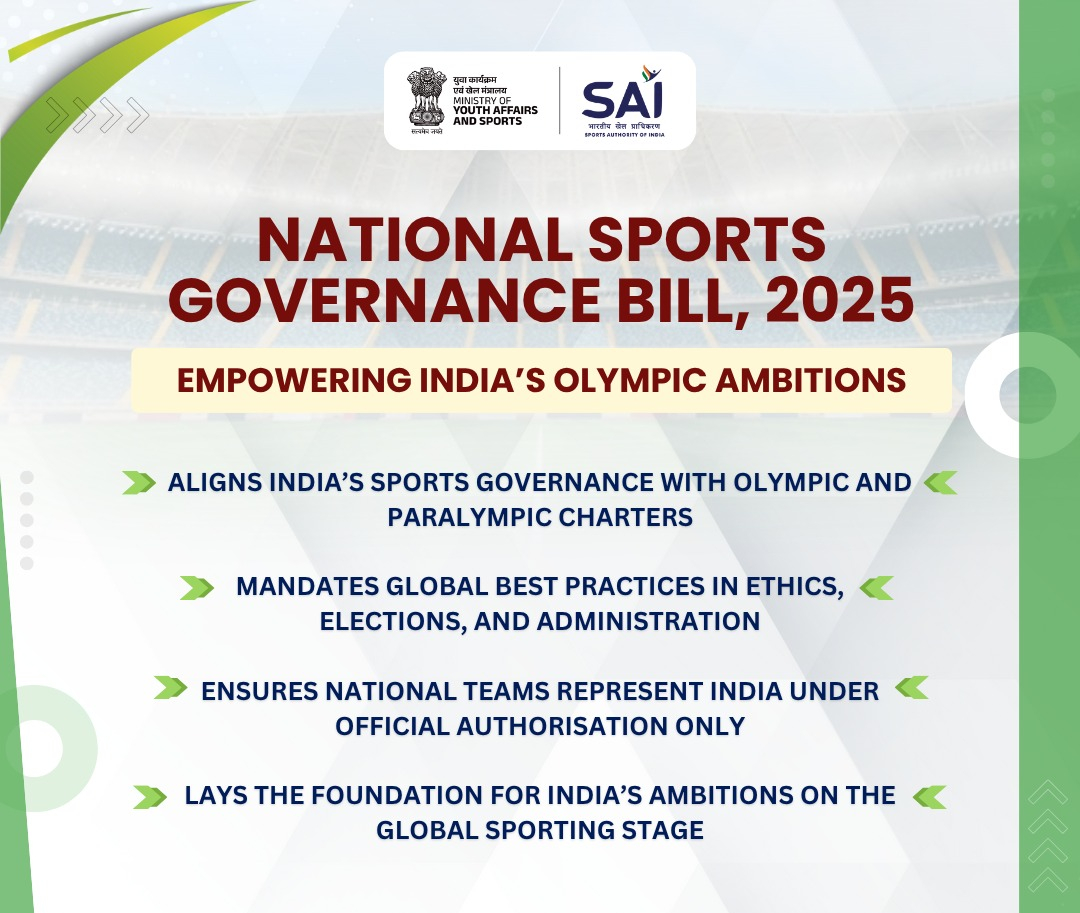
- 26 Jul 2025
In News:
The National Sports Governance Bill, 2025, introduced in the Lok Sabha, marks a significant legislative effort to restructure and reform India's sports administration framework. It seeks to replace the non-binding National Sports Code of 2011 with a statutory, enforceable law that prioritizes transparency, athlete welfare, and institutional accountability.
Key Objectives of the Bill
- Establish a uniform governance system across all sports federations.
- Legally regulate bodies like the Board of Control for Cricket in India (BCCI).
- Align Indian sports governance with international standards, particularly ahead of India’s 2036 Olympic bid.
- Introduce dedicated institutions for oversight, dispute resolution, and electoral transparency.
Major Structural Changes
1. Statutory Institutions Established
|
Institution |
Function |
|
National Sports Board (NSB) |
Recognition, funding eligibility, ethics compliance, and oversight of NSFs. |
|
National Sports Tribunal |
Dispute resolution (e.g., selection, elections, governance conflicts). |
|
National Sports Election Panel |
Ensures free, fair, and independent elections of sports bodies. |
Governance Reforms in National Sports Bodies
- Recognition & Regulation: All National Sports Federations (NSFs), including the BCCI, must seek annual recognition from the NSB.
- Affiliation: National bodies must have aligned state and district units, and comply with international federations' statutes.
- Code of Ethics: Mandatory for members, athletes, coaches, sponsors, and officials.
- Grievance Redressal: Internal mechanisms must be instituted by each federation.
Administrative Structure of National Bodies
- General Body: Equal representation from all affiliates and ex-officio members.
- Executive Committee: Maximum 15 members, mandatory inclusion of at least 4 women and 2 elite athletes.
- Age Limit: Officials must be aged 25–70 years (exceptions up to 75 years if permitted by international rules).
- Term Limit: Max three consecutive terms of four years in the same or different posts, with a cooling-off period.
Role of the National Sports Board (NSB)
The NSB acts as a central regulatory authority, similar to SEBI in financial markets.
Powers and Functions:
- Granting/suspending/canceling recognition of sports bodies.
- Investigating misuse of funds or violation of athlete welfare norms.
- Issuing guidelines for ethics, governance, and international compliance.
- Forming ad-hoc bodies in case of international de-recognition.
Composition: Chairperson and members with expertise in sports governance, law, and public administration. Appointed by the central government through a search-cum-selection committee.
National Sports Tribunal
A quasi-judicial body to resolve disputes involving federations, athletes, and administration.
Composition:
- Chairperson: Sitting/former Supreme Court Judge or Chief Justice of a High Court.
- Two expert members from sports, law, or public administration.
Appointed by: A committee comprising the Chief Justice of India (or nominee), the Law Secretary, and the Sports Secretary.
Appeals: Lie directly to the Supreme Court, except where international regulations mandate the Court of Arbitration for Sport (CAS) in Switzerland.
Jurisdiction Excludes: Disputes related to international sports events and internal matters of global sports bodies.
Electoral Oversight
A National Sports Election Panel will be constituted, comprising:
- Former Election Commissioners of India
- Former Chief Electoral Officers and Deputy Election Commissioners
Purpose:
- Supervise elections of executive committees of national federations.
- Ensure electoral integrity at the state and district levels via affiliate panels.
Legal Enforceability vs. Sports Code 2011
|
Parameter |
Sports Code 2011 |
Governance Bill 2025 |
|
Legal Status |
Advisory guidelines |
Statutory law |
|
Enforceability |
Non-binding |
Legally enforceable |
|
Gender/Athlete Representation |
Not mandated |
4 women & 2 elite athletes required |
|
Dispute Resolution |
Ministry-driven |
National Sports Tribunal |
|
BCCI Regulation |
Outside purview |
Brought under framework |
|
Election Oversight |
Ministry oversight |
Independent election panel |
|
RTI Applicability |
Exempt (BCCI) |
Mandatory for recognized bodies |
Bringing BCCI Under the Legal Framework
Historically resisting regulation, the BCCI will now be required to:
- Register annually with the NSB.
- Submit to the National Sports Tribunal for disputes.
- Comply with RTI Act provisions, if it seeks government recognition and funding.
This change is significant as cricket is now part of the 2028 Los Angeles Olympics, making BCCI subject to international governance norms under the Olympic Charter.
Provision for Exemptions
The central government may exempt specific sports bodies from certain provisions of the Bill, in the public interest or for the promotion of specific sports disciplines.
Parallel Legislation: Anti-Doping Amendment
The National Anti-Doping (Amendment) Bill, 2025 was also introduced, addressing World Anti-Doping Agency (WADA) concerns. It:
- Retains the National Board for Anti-Doping, but strips it of oversight over NADA.
- Restores NADA’s independence, aligning Indian anti-doping efforts with international norms.
Manual Scavenging
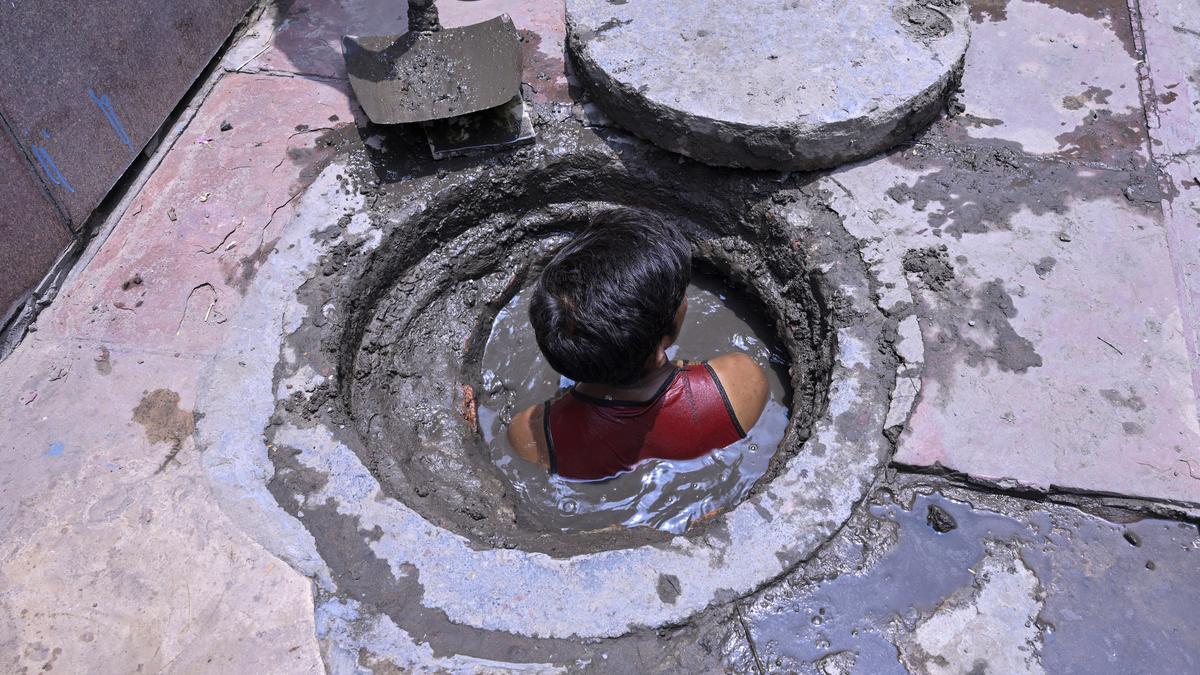
- 24 Jul 2025
In News:
A recent social audit conducted by the Ministry of Social Justice and Empowerment has exposed alarming lapses in the safety and legal safeguards meant to protect sanitation workers. The study, which examined 54 sewer-related deaths across 17 districts in eight States and Union Territories during 2022 and 2023, found that over 90% of the workers who died had no access to basic safety gear or mechanised equipment. Despite legal bans and policy interventions, manual scavenging and hazardous sewer cleaning continue, often resulting in fatalities, primarily among marginalized communities.
What is Manual Scavenging?
Manual scavenging involves the manual handling of human excreta from dry latrines, open drains, sewers, and septic tanks. Although officially prohibited under the 2013 Act, the practice continues under different forms, particularly through hazardous sewer and septic tank cleaning.
Key Findings from the Social Audit (2022–2023)
- 150 deaths from hazardous cleaning were recorded nationally during the two-year period.
- In 49 of the 54 deaths audited, no safety equipment was provided.
- In only five cases, the deceased had gloves; just one worker had both gloves and gumboots.
- No mechanised equipment was available in 47 cases; training was provided in only one instance.
- Informed consent was missing in 27 cases; in the 18 cases where consent was obtained, no counselling on risks was given.
- Most workers were individually contracted and not hired through government channels, evading institutional accountability.
- Post-death awareness drives were conducted in only seven locations, and even these were only partially executed.
Constitutional and Legal Safeguards
Constitutional Provisions:
- Article 21: Ensures the right to life with dignity, including safe working conditions.
- Article 23: Prohibits forced labour, applicable when workers are compelled into hazardous tasks.
- Article 42: Calls for humane working conditions and maternity relief.
Legal Framework:
- Prohibition of Employment as Manual Scavengers and their Rehabilitation Act, 2013:
- Bans manual scavenging.
- Mandates rehabilitation of identified workers.
- Supreme Court Judgment (2014 – Safai Karamchari Andolan v. Union of India):
- Ordered ?10 lakh compensation for each sewer/septic tank death.
- Held the State responsible for implementation failures.
Government Initiatives
NAMASTE Scheme (2023)
The National Action Plan for Mechanised Sanitation Ecosystem (NAMASTE) aims to eliminate hazardous cleaning practices.
- 84,902 workers have been identified across 36 States/UTs.
- Around 50% of them have been provided with PPE kits.
- In Odisha, 100% of identified workers (1,295) have received PPE kits, supported by the Garima Scheme.
- ?20 crore in capital subsidies distributed to 707 sanitation workers.
- 1,000 awareness workshops conducted.
- The scheme has also identified 37,800 waste pickers for support.
Other Key Initiatives:
- Swachh Bharat Abhiyan: Aims to reduce dependence on manual scavenging through sanitation infrastructure.
- Rashtriya Garima Abhiyaan: Campaign to eliminate manual scavenging and ensure rehabilitation.
- Bandicoot Robot: India’s first manhole-cleaning robot, developed in Kerala, which became the first fully robotised state for manhole cleaning in 2023.
World Happiness Report 2025
- 23 Mar 2025
In News:
The World Happiness Report (WHR) 2025 was released on 20th March (World Happiness Day) by the Wellbeing Research Centre at the University of Oxford, in collaboration with Gallup and the UN Sustainable Development Solutions Network (UNSDSN).
India’s Performance:
- India’s Rank (2025):118th out of 147 countries (Improved from 126th in 2024).
- Sub-Indicator Performance:
- Donations: 57th
- Volunteering: 10th
- Helping a Stranger: 74th
- Wallet Return Probability:
- 115th (by neighbor)
- 86th (by stranger)
- 93rd (by police)
- Sub-Indicator Performance:
- Happiness Score: Increased from 4.054 (2021–23) to 4.389 (2022–24).
- Rank among Neighbors:
- Nepal: 92nd
- Pakistan: 109th
- Myanmar: 126th
- Sri Lanka: 133rd
- Bangladesh: 134th
Top 10 Happiest Countries (2025):
- Finland (8th consecutive year)
- Denmark
- Iceland
- Sweden
- Israel
- Costa Rica (new entrant)
- Netherlands
- Norway
- Luxembourg
- Mexico(new entrant)
Least Happy Countries (Bottom 5):
- 147th: Afghanistan (4th consecutive year as lowest)
- 146th: Sierra Leone
- 145th: Lebanon
- 144th: Malawi
- 143rd: Zimbabwe
About the Report:
- Purpose: Measures global well-being through life evaluations and promotes policy focus on happiness, mental health, and quality of life over mere economic growth.
- Methodology:
- Based on Gallup World Poll (2022–2024 data).
- Uses Cantril Ladder Scale (0–10) for life evaluation.
- Six Key Indicators:
- GDP per capita
- Healthy life expectancy
- Social support
- Freedom to make life choices
- Generosity
- Perception of corruption
Global Trends in Happiness (2025):
- Nordic Dominance: Finland, Denmark, Iceland, and Sweden occupy top ranks.
- Decline in Western Countries:
- USA: 24th (down from 11th in 2012)
- UK: 23rd (lowest since 2017)
- Rising loneliness and social isolation major causes.
- Israel (5th): Maintained high rank despite ongoing conflict.
- Social Support Decline: 19% of young adults globally report having no one to rely on.
Special Focus: India vs Pakistan – The Paradox
Despite India’s:
- Higher GDP per capita ($2,480.8 vs Pakistan’s $1,365.3),
- Better health indicators (life expectancy: 58.1 vs 56.9),
- Better corruption perception rank (India: 96th, Pakistan: 135th),
India still ranks lower in happiness.
Reason: Low scores in perceived freedom and individual life satisfaction.
World Happiness Day:
- Observed on: 20th March
- Initiated by: Bhutan, which pioneered the concept of Gross National Happiness (GNH).
- Adopted by UNGA: July 2012
- Theme 2025:"Caring and Sharing"
Aadhaar Governance Portal

- 07 Mar 2025
In News:
The government has introduced the Aadhaar Governance Portal, a new initiative developed by the Ministry of Electronics and Information Technology (MeitY). This platform is designed to streamline the approval process for Aadhaar authentication requests and further enhance citizen services.
Key Features:
- Simplified Authentication Process: The portal offers a step-by-step guide to help both government and private entities apply for Aadhaar authentication. It aims to improve the overall delivery of services, reducing administrative delays.
- Seamless Onboarding: Entities can now access detailed Standard Operating Procedures (SOPs) for onboarding Aadhaar authentication services. The portal serves as a comprehensive resource for entities seeking authentication approval.
- Wide Applications Across Sectors: The portal will be used for Aadhaar authentication in multiple sectors, including healthcare, education, e-commerce, and hospitality. It enables citizens to access essential services with ease.
- Face Authentication: The integration of face authentication in customer-facing applications will allow for anytime, anywhere authentication, enhancing the flexibility and accessibility of services.
Impact on Governance:
This initiative comes as part of the government's broader agenda to support good governance through technology and improve the delivery of welfare services. The new rules, introduced under the Aadhaar Authentication for Good Governance (Social Welfare, Innovation, Knowledge) Rules, 2025, aim to enhance service delivery and simplify processes for both citizens and service providers.
Role of Aadhaar:
Aadhaar, a 12-digit unique identification number, serves as proof of identity linked to an individual’s biometric and demographic information. Launched by UIDAI in 2009, Aadhaar has become integral to the delivery of government services and is now widely used by private entities for identification purposes.
With its ability to ensure verified identities, Aadhaar is crucial for streamlining processes in sectors ranging from welfare distribution to digital banking.
Internet Governance Internship and Capacity Building (IGICB) Scheme
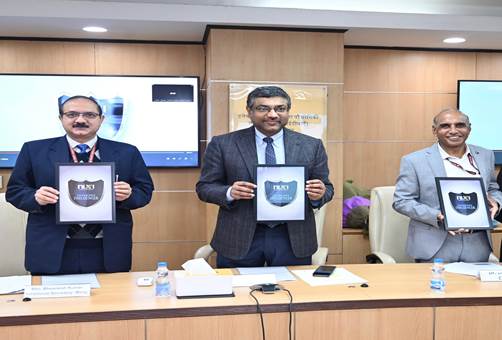
- 20 Jan 2025
In News:
The National Internet Exchange of India (NIXI) announced the launch of its Internet Governance Internship and Capacity Building Scheme. This program aims to build awareness and develop expertise in internet governance (IG) among Indian citizens.
Key Highlights:
Objective:
To develop awareness and build a skilled pool of professionals in Internet Governance (IG) in India, enabling active Indian participation in global digital policy platforms.
Key Features:
- Internship Format:
- Bi-annual internship with two tracks: 3-month and 6-month durations
- Mentorship by experts from:
- International bodies (e.g., ICANN, APNIC, APTLD)
- Academic institutions and retired officials
- Stipend: ?20,000/month
- Outreach Component: Mandatory awareness programs to be conducted by interns
Focus Areas:
- Engagement with I-Star organizations, such as:
- ICANN (Internet Corporation for Assigned Names and Numbers)
- ISOC (Internet Society)
- IEEE (Institute of Electrical and Electronics Engineers)
- IETF (Internet Engineering Task Force)
- Exposure to global best practices and policy mechanisms in digital governance
- Capacity building for inclusive participation in emerging internet issues
Significance:
- Promotes digital policy leadership among Indian youth
- Enhances India’s representation in global internet governance dialogues
- Fosters a tech-savvy and policy-aware workforce for digital India initiatives
About NIXI (National Internet Exchange of India):
- Established: 19 June 2003
- Type: Not-for-profit (Section 8 company)
- Parent Ministry: MeitY
- Mandate:
- Enhance internet adoption and digital infrastructure in India
- Key Services:
- Internet Exchange Points (IXPs): Facilitate domestic internet traffic exchange
- .IN Registry: Manage India’s country code top-level domain (.in)
- IRINN: Allocate IPv4 and IPv6 resources within India
Capacity Building & Training: Promote internet-related knowledge and skills
Viksit Panchayat Karmayogi Initiative
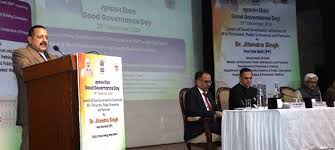
- 26 Dec 2024
In News:
On Good Governance Day, commemorating the 100th birth anniversary of former Prime Minister Atal Bihari Vajpayee, Dr. Jitendra Singh, the Union Minister of State for various departments, launched the ‘Viksit Panchayat Karmayogi’ initiative. This initiative is part of the broader ‘Prashasan Gaon Ki Aur’ campaign, which aims to empower Panchayati Raj Institutions (PRIs) at the grassroots level by enhancing the capacity and competence of elected representatives and officials.
Objective of the ‘Viksit Panchayat Karmayogi’ Initiative
The initiative seeks to strengthen PRIs by providing innovative tools and frameworks for capacity building and participatory governance. It will focus on equipping local leaders and officials with the necessary knowledge and tools to make effective decisions and implement sustainable development initiatives. Piloted in Odisha, Assam, Gujarat, and Andhra Pradesh, it uses e-learning platforms, AI-powered chatbots, and mobile apps to address knowledge gaps and improve service delivery at the local level. This program aligns with the government's mission to decentralize governance and promote citizen-centric and equitable development across rural India.
Other Key Initiatives Launched on Good Governance Day
- iGOT Karmayogi Platform Dashboard: A new dashboard on the iGOT Karmayogi platform, which empowers ministries, departments, and state administrators to monitor progress in capacity-building efforts. The enhanced dashboard includes customizable views, robust data filtering tools, and insights to optimize decision-making, marking the introduction of the 1600th e-learning course. This development is part of the Mission Karmayogi initiative to strengthen the civil service through continuous learning.
- CPGRAMS Annual Report 2024: The CPGRAMS Annual Report provided a review of the Centralized Public Grievance Redress and Monitoring System (CPGRAMS). This platform has been instrumental in resolving over 25 lakh grievances annually, leveraging advanced technologies and multilingual support. The report also highlighted the implementation of the Grievance Redressal Assessment and Index (GRAI), which has improved transparency, accountability, and the efficiency of public service delivery.
- Single Simplified Pension Application Form: A new digital pension system was launched, combining nine separate pension forms into a single, streamlined application. This digital transformation integrates e-HRMS with Bhavishya, reducing processing time and ensuring timely pension disbursement with real-time tracking and Aadhaar-based e-signatures. This system enhances the user experience for pensioners, making the process more efficient and transparent.
- Compendium of Pension Related Instructions 2024: Dr. Singh introduced a comprehensive Compendium of updated rules, procedures, and guidelines related to pensions. This document serves as a reference for pensioners and administrative personnel, ensuring clarity in the pension process and aligning with the government's vision of simplifying and streamlining pension systems.
Good Governance Day 2024 (Sushasan Diwas)
- Observed on: December 25 annually, marking the birth anniversary of Atal Bihari Vajpayee (1924–2018).
- Introduced in 2014: By the Bharatiya Janata Party (BJP) government under Prime Minister Narendra Modi.
- Purpose: To honor Vajpayee's contribution and promote good governance practices in India.
- Objective of Good Governance Day:
- Promote Government Accountability: Ensuring government actions and services are transparent and citizens benefit equally.
- Instill Good Governance Values: Encourages civil servants to practice effective and responsible governance.
- Bridge the Gap: Between citizens and the government through active participation.
- Theme for 2024: "India’s Path to a Viksit Bharat: Empowering Citizens through Good Governance and Digitalisation."
Worldwide Governance Indicators (Indian Express)
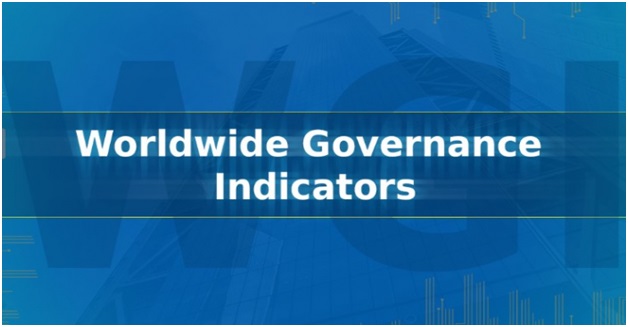
- 17 Nov 2023
Why in the News?
The Indian Chief Economic Adviser recently expressed worry about credit rating agencies using the World Bank's Worldwide Governance Indicators to assess ratings, particularly for developing countries.
About Worldwide Governance Indicators:
- The Worldwide Governance Indicators is based on a long-standing research programme of The World Bank.
- It was first established in 1996 to measure the quality of governance in over 200 countries.
- These aggregate indicators are derived from over 30 individual data sources produced by a variety of survey institutes, think tanks, non-governmental organizations, international organizations, and private sector firms.
- The indicators capture six key dimensions of governance including:
- Voice and Accountability
- Political Stability and Absence of Violence
- Government Effectiveness
- Regulatory Quality
- Rule of Law
- Control of Corruption
- According to The World Bank, corruption is the single greatest obstacle to economic and social development.
About The World Bank:
- The World Bank is an international financial institution that provides financial and technical assistance to developing countries around the world.
- Its goals are to reduce poverty and support development.
- It helps by offering a growing range of free tools, research, and knowledge to help people address the world’s development challenges, for instance, comprehensive, downloadable indicators about development in countries around the globe.
